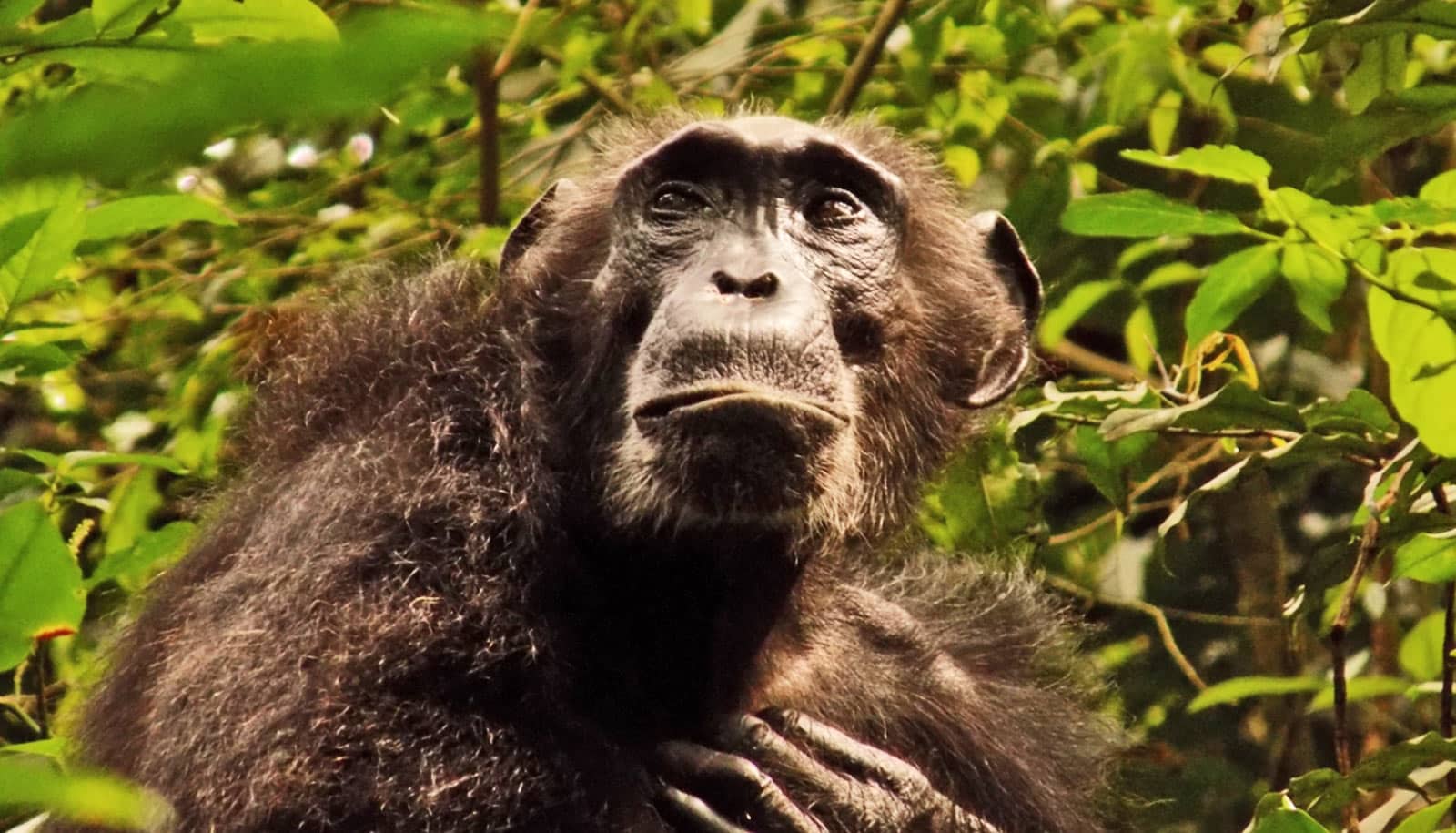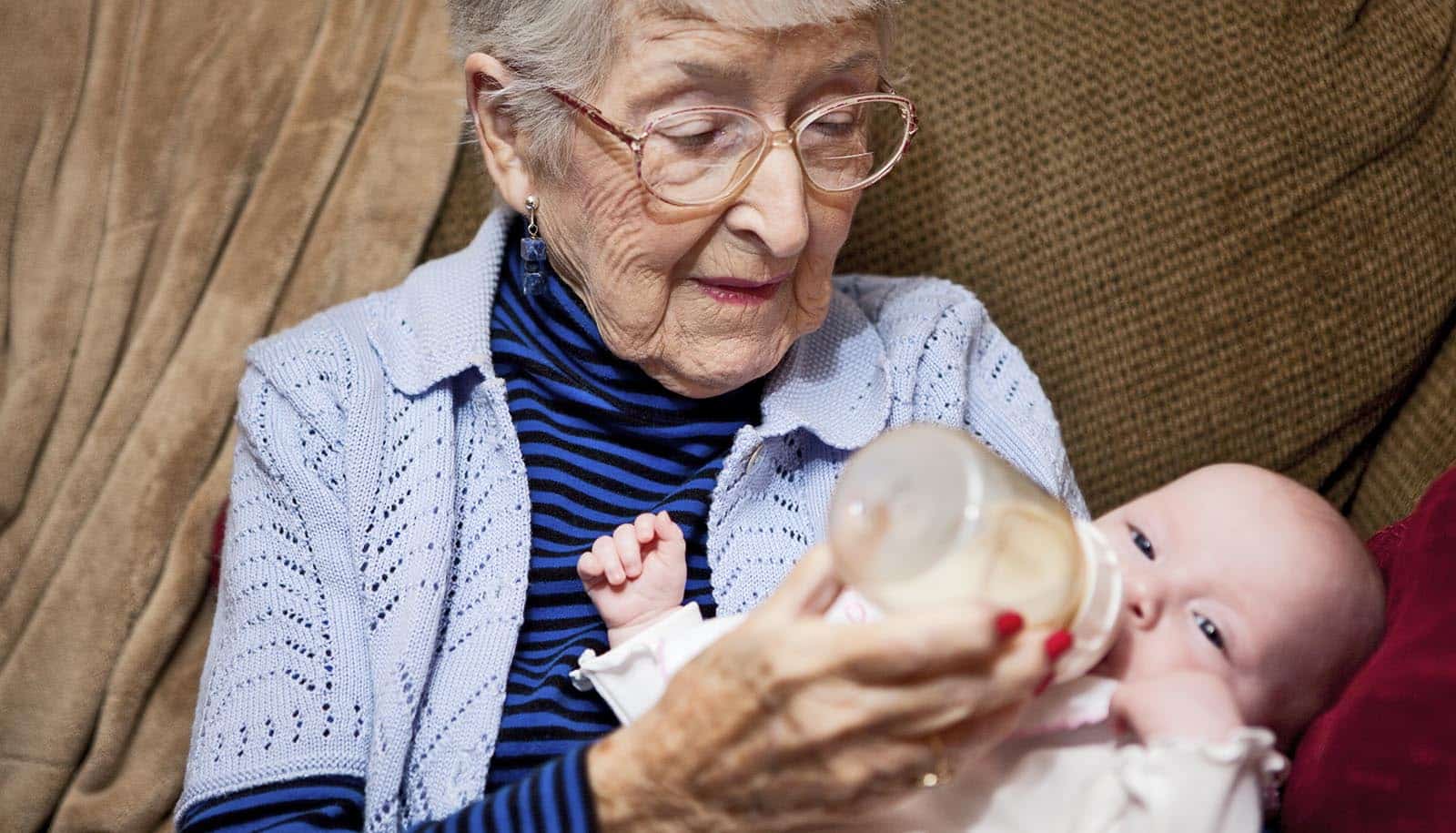Female chimpanzees can experience menopause and post-reproductive survival, a new study shows.
Prior to the study, these traits had only been found among mammals in a few species of toothed whales, and among primates—only in humans. These new demographic and physiological data can help researchers better understand why menopause and post-fertile survival occur in nature, and how it evolved in the human species.
Jacob Negrey, an assistant professor in the University of Arizona School of Anthropology, in the College of Social and Behavioral Sciences, and second author of the study published in Science, has studied the chimps at the Ngogo community of wild chimpanzees in western Uganda’s Kibale National Park for about a decade.
“People have been studying this phenomenon in chimps for a while, looking to see if there is a post-reproductive period, and they haven’t seen it in many chimpanzee groups,” Negrey says.
“Sure enough, we see very similar patterns in this particular chimp subpopulation, suggesting that, yes, menopause and these long post-reproductive lifespans are not a uniquely human phenomenon necessarily.”
“The (study) results show that under certain ecological conditions, menopause and post-fertile survival can emerge within a social system that’s quite unlike our own and includes no grandparental support,” says first author Brian Wood of UCLA, referring to the grandmother hypothesis.
That hypothesis, which has been used to explain the existence of human postmenopausal survival, proposes that females in their post-reproductive years may be able to pass on more of their genes by helping to raise the birth rates of their own children or by caring directly for grandchildren, thereby increasing grandchildren’s odds of survival.
And indeed, several studies of human grandmothers have found these positive effects. But chimpanzees have very different living arrangements than humans. Older female chimpanzees typically do not live near their daughters or provide care for grandchildren, yet females at Ngogo often live past their childbearing years.
While substantial post-reproductive lifespans have not previously been observed in other long-term studies of wild chimpanzees, they have sometimes been seen in chimpanzees and other primates in captivity, who receive good nutrition and medical care.
This raises the possibility that the post-reproductive lifespans of female Ngogo chimpanzees may be a temporary response to unusually favorable ecological conditions, as this population enjoys a stable and abundant food supply and low levels of predation.
Another possibility, however, is that post-reproductive lifespans are actually an evolved, species-typical trait in chimpanzees but have not been observed in other chimpanzee populations because of the recent negative impacts of humans.
“Chimpanzees are extremely susceptible to dying from diseases that originate in humans and to which they have little natural immunity,” says Kevin Langergraber of Arizona State University. “Chimpanzee researchers, including us at Ngogo, have learned over the years how devastating these disease outbreaks can be to chimpanzee populations, and how to reduce their chances of happening.”
The researchers examined mortality and fertility rates of 185 female chimpanzees from demographic data collected from 1995 to 2016. They calculated the fraction of adult life spent in a post-reproductive state for all the observed females and measured hormone levels in urine samples from 66 females of varying reproductive statuses and ages, ranging from 14 to 67 years.
Thousands of hours of fieldwork at Ngogo were needed to collect the observations and samples needed for this study. Negrey collected the samples with colleagues, then conducted hormone analyses to identify menopause in the chimps.
“This study is the result of an extraordinary amount of effort,” Negrey says. “It’s only because our team has spent decades monitoring these chimpanzees that we can be confident some females live long after they’ve stopped reproducing. We also spent thousands of hours in the forest to collect urine samples from these chimpanzees with which to study hormonal signals of menopause.”
The researchers measured hormone levels associated with human menopause, which include increasing levels of follicle-stimulating hormone and luteinizing hormone, as well as decreasing levels of ovarian steroid hormones including estrogens and progestins.
As with other chimpanzee populations and humans, fertility in the chimpanzees studied declined after age 30, with no births observed after age 50. The hormone data showed that the Ngogo females experienced a menopausal transition similar to that of humans, beginning around age 50.
Also like humans, it was not unusual for these female chimpanzees to live past 50. A female who reached adulthood at age 14 was post-reproductive for about one-fifth of her adult life, about half as long as a human hunter-gatherer.
The study’s findings raise a number of new questions researchers will now follow, Negrey says, including how to leverage data from chimpanzees to better understand human health challenges associated with aging. Scientists previously pointed to the lack of menopause in wild chimpanzees to suggest that there was little to glean about the biology of human aging by studying chimps.
“This is the sort of study that shows that we need to rethink that model,” Negrey says, “that maybe there is even greater relevance for studying chimpanzee aging to human medical problems that we previously thought.”
Ngogo Chimpanzee Project founders and co-directors John Mitani and David Watts are coauthors of the study.
Source: University of Arizona


